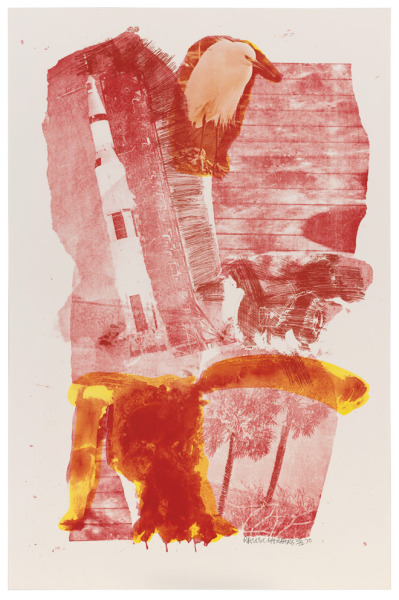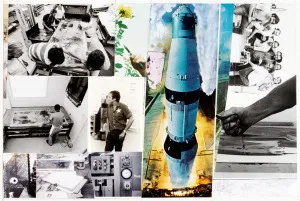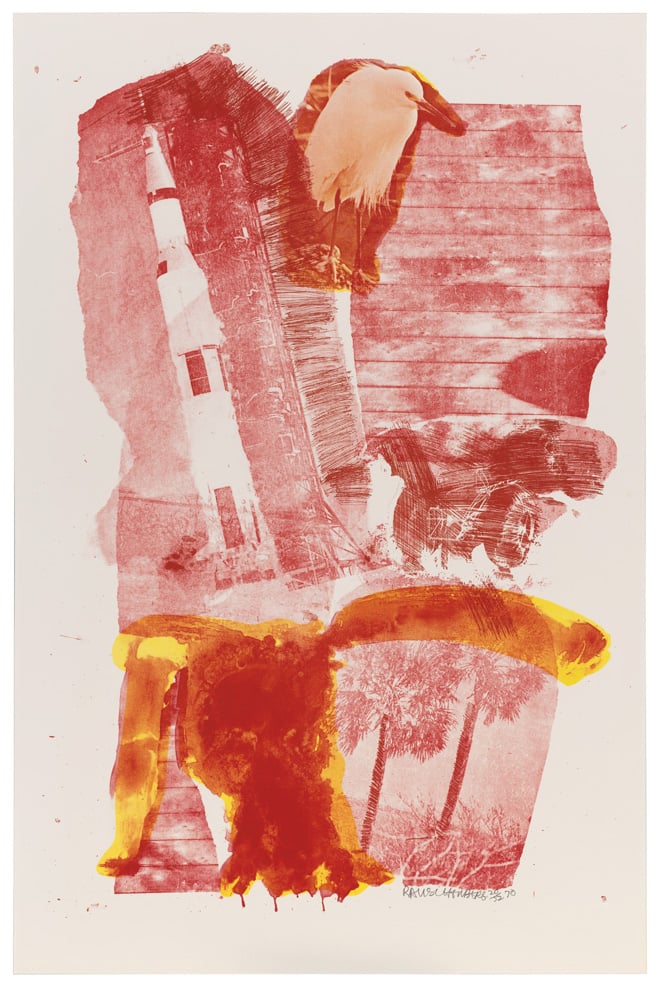
American pop artist Robert Rauschenberg’s “Stoned Moon” projects, currently on display in the Cantor Art Center’s exhibit “Loose in Some Real Tropics,” are a series of lithographic prints, collages, photographs and drawings that document the impact of technological innovations on American culture during the Apollo era. The pieces were made for “Stoned Moon Book,” a document that was never actually published. Consequentially, the artworks produced for the project have rarely been out in the public eye. “Loose in Some Real Tropics” showcases these lesser known works and encourages us to reflect on the relationship between visual arts and cosmology.
Rauschenberg’s work juxtaposes machinery with organic forms and animal symbolism in order to highlight the impact of technological innovation on American culture in the 1960s. The pieces on display have a powerful, industrial quality to them. Sepia-toned collages and graphite sketches are interspersed throughout the room, punctuated by rich lithograph prints that are bathed in primary colors. A recurring theme in Rauschenberg’s work is the contrast between humans and machinery. He superimposes irregular, organic shapes on precise technical diagrams, drawing attention to how technology shapes our interactions with the outside world.
Out of the 34 lithographs that comprise the “Stoned Moon” series, “Sky Garden” is arguably the centerpiece. The print has the distinction of being the largest hand-pulled lithograph ever created, featuring a blend of photographic imagery and painterly abstraction. Raw splatters of ink crisscross the piece, injecting a human element into the machine-like nature of the subject matter.

Rauschenberg’s interpretation of the Apollo era provides a very different interpretation of NASA’s achievements in the 1960s. Indeed, the collage and graphite works on the east wall of the exhibit are arranged as something of a timeline. Rauschenberg portrays astronauts not as heroes — as they have traditionally been heralded — but as characters in a larger, overarching narrative.
The objects on display in the middle of the exhibit offer insight into Rauschenberg’s creative process. Pages of Rauschenberg’s notebook showcase the American artist’s familiar scrawl, which consisted entirely of uppercase letters. There is a spontaneous, sketchy quality to Rauschenberg’s writing, intensely reminiscent of his drawing style. Moreover, a series of photographs depicts Rauschenberg at work in his studio, providing some idea as to how he produced these large-scale prints. Looking behind the scenes enables the viewer to better understand Rauschenberg’s thought process and the lens through which he viewed the Apollo era.
“Loose in Some Real Tropics” does the important job of linking visual arts with aeronautics and highlighting the impact that technological growth has on American culture.
“Loose in Some Real Tropics” is on view until Mar. 26, 2015 at Cantor Arts Center.
Contact Eric Huang at eyhuang ‘at’ stanford.edu.
